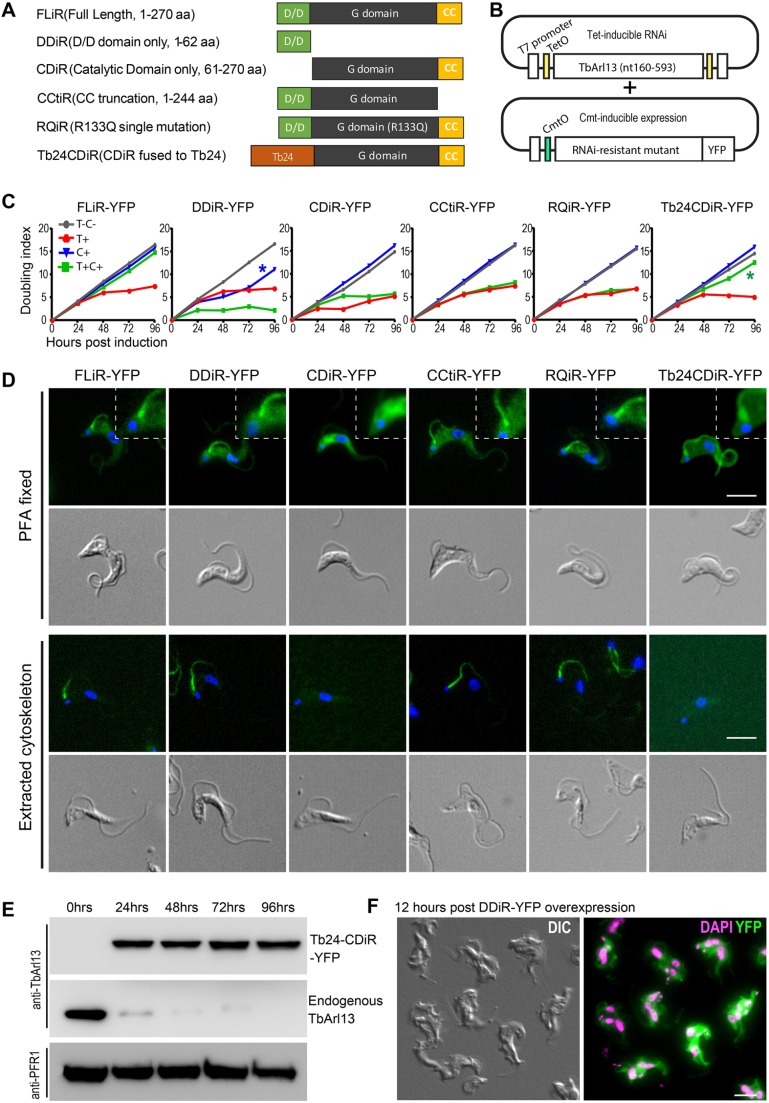Fig. 4.
Flagellar enrichment of TbArl13 catalytic domain is critical for cell proliferation. (A,B) Schematic presentation of the TbArl13 truncations and mutants (A) used in the RNAi complementation experiments (B). TbArl13-RNAi is controlled by a tetracycline-inducible system and expression of RNAi-resistant (iR) mutants is controlled by a cumate-inducible system. (C) Proliferation of TbArl13-RNAi cells carrying different RNAi resistant mutants under indicated culture conditions were plotted. T-C-: control without tetracycline or cumate addition. T+: tetracycline only (10 μg/ml). C+: cumate only (2 μg/ml). T+C+: tetracycline (10 μg/ml) and cumate (2 μg/ml). Blue asterisk: initial growth inhibition and later recovery upon DDiR–YFP induction. Green asterisk: sustained proliferation of Tb24–CDiR–YFP-expressing cells under TbArl13-RNAi. The growth curves shown are representative of two independent experiments. (D) BSF cells stably expressing the indicated mutant constructs were fixed with 4% PFA before (whole cell) or after detergent extraction (cytoskeleton), stained with DAPI and imaged by fluorescence microscopy. Insets show enlarged areas at the base of the flagellum, highlighting the flagellum enrichment of FLiR–YFP, DDiR–YFP, CCtiR–YFP, RQiR–YFP and Tb24CDiR–YFP, and the lack of flagellum enrichment for CDiR–YFP. All D/D domain-containing mutants were resistant to detergent extraction. (E) Immunoblots confirmed cumate-induced expression of Tb24CDiR–YFP and tetracycline-induced depletion of endogenous TbArl13. Both Tb24CDiR–YFP and endogenous TbArl13 were probed with anti-TbArl13 antibody. Anti-PFR1 antibody was used as a loading control. (F) A representative image showing cytokinesis arrest in cells induced for DDiR–YFP overexpression (12 h after addition of 30 μg/ml cumate). Scale bars: 5 μm.

